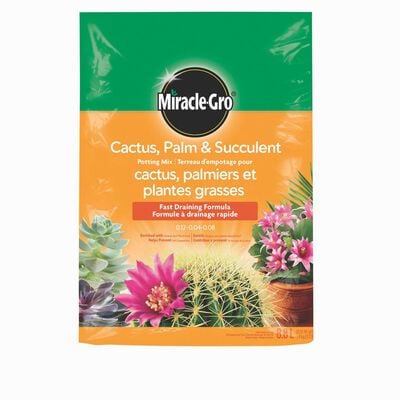
How to Propagate Succulents
Succulents are such hands-off plants that it almost seems impossible to have too many. When you hardly have to lift a finger to care for them, why not double or triple your supply? Plus, their mostly small-ish nature makes it easy to fill a window sill or coffee table with several of these unique creatures. Thankfully, propagating succulents is nearly as effortless as looking after them.
Most succulents can be lovingly cloned by repotting the baby plants that appear or by rooting a leaf or stem cutting (which you choose will depend on your type of succulent). To help you grow more succulents—whether for swapping, gifting, or creating low-key decor—here are the materials you'll need and how to do two common methods.
Gather Your Materials
Succulents can be propagated at any time. Most indoor gardeners wait until a baby plant is half the size of the mother plant or a stem is becoming too long to remain upright. Once your plant is ready, grab these items.
• Mother plant
• A sharp, clean pair of pruning shears or scissors
• Small starter pots with drainage holes
• Tray for drying (for cuttings only)
• Miracle-Gro® Cactus, Palm & Succulent Potting Mix
• Miracle-Gro® Succulent Plant Food
Choose Your Propagation Method
Succulents are resilient plants, making the success rate pretty high for propagation. The trick is to avoid becoming a helicopter mom just because they're plant babies. Even succulents that are just starting out appreciate a fuss-free approach. Pick one of these two methods—depending on your type of plant—and follow the steps below.
1. Offset Division
If you've ever noticed itty-bitty plantlets growing from the base of your succulent, those are offsets. They look pretty cool where they are already, but if you remove them and pot them up on their own, you'll have more succulents (and then they can grow tiny plantlets, and…).
- Make sure the offset has already formed roots by gently pulling on it. If it resists, it's established and you can repot it. (Pro tip: If the roots get damaged in the process of removing it, trim them off and follow from step 2 in the section below.)
- Fill a small container with Miracle-Gro® Cactus, Palm & Succulent Potting Mix, stopping an inch below the rim. The quick-draining texture will help your tiny guy thrive, both now and well into his bright future.
- Use your finger to make a divot in the soil and settle the offset into it. Gently fill in and press down around it.
- Give the roots a chance to acclimate: Hold back on water and strong sunlight for 1 week. Then you can water it lightly and put it back in a sunny spot.
- A month later, add nutrient-rich Miracle-Gro® Succulent Plant Food, following all label directions.
2. Leaf or Stem Cuttings
When it comes to succulent cuttings, leaf cuttings will take longer to mature than a stem cutting, but the process is pretty much the same (read: easy!).
- Using clean shears, cut an actively growing, 1- to 3-inch long stem, from your succulent or gently twist off a full leaf with your fingers.
- Let the cutting air dry for 4 to 7 days so a callus can form over the cut.
- Once the callus has formed, fill a small pot with Miracle-Gro® Cactus, Palm & Succulent Potting Mix, which is specifically designed for low-water plants.
- Stick the callused end into the soil. For a stem, you want to get at least one or two nodes down into the soil, but a leaf can simply be pressed down so it's making contact. (A node is the point where the leaf meets the stem, FYI!)
- Lightly water your plant baby now, and mist it daily while it's rooting.
- Once rooted, you can begin to give it a regular boost of Miracle-Gro® Succulent Plant Food, following all label directions.
Succulents propagate so naturally, it can be hard not to turn your home into a life-sized terrarium. Go ahead and indulge your inner phytophile, because when plants are this easy, loving them can't be wrong!

